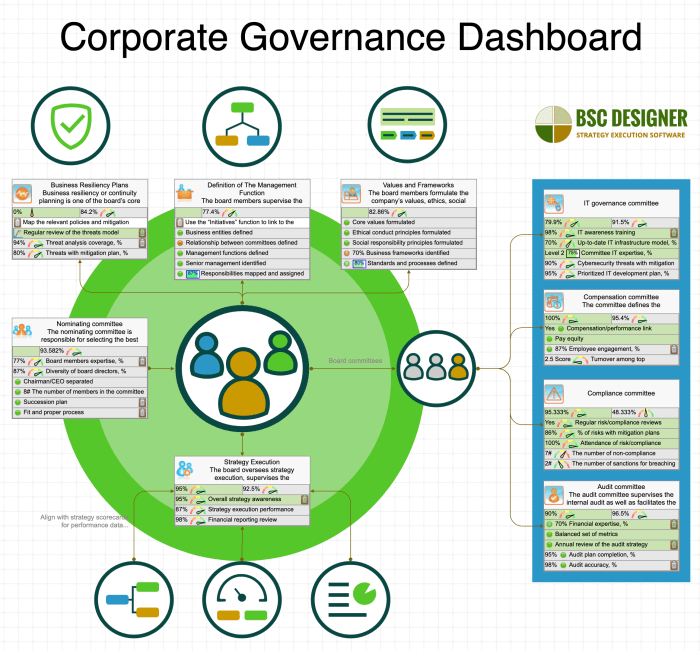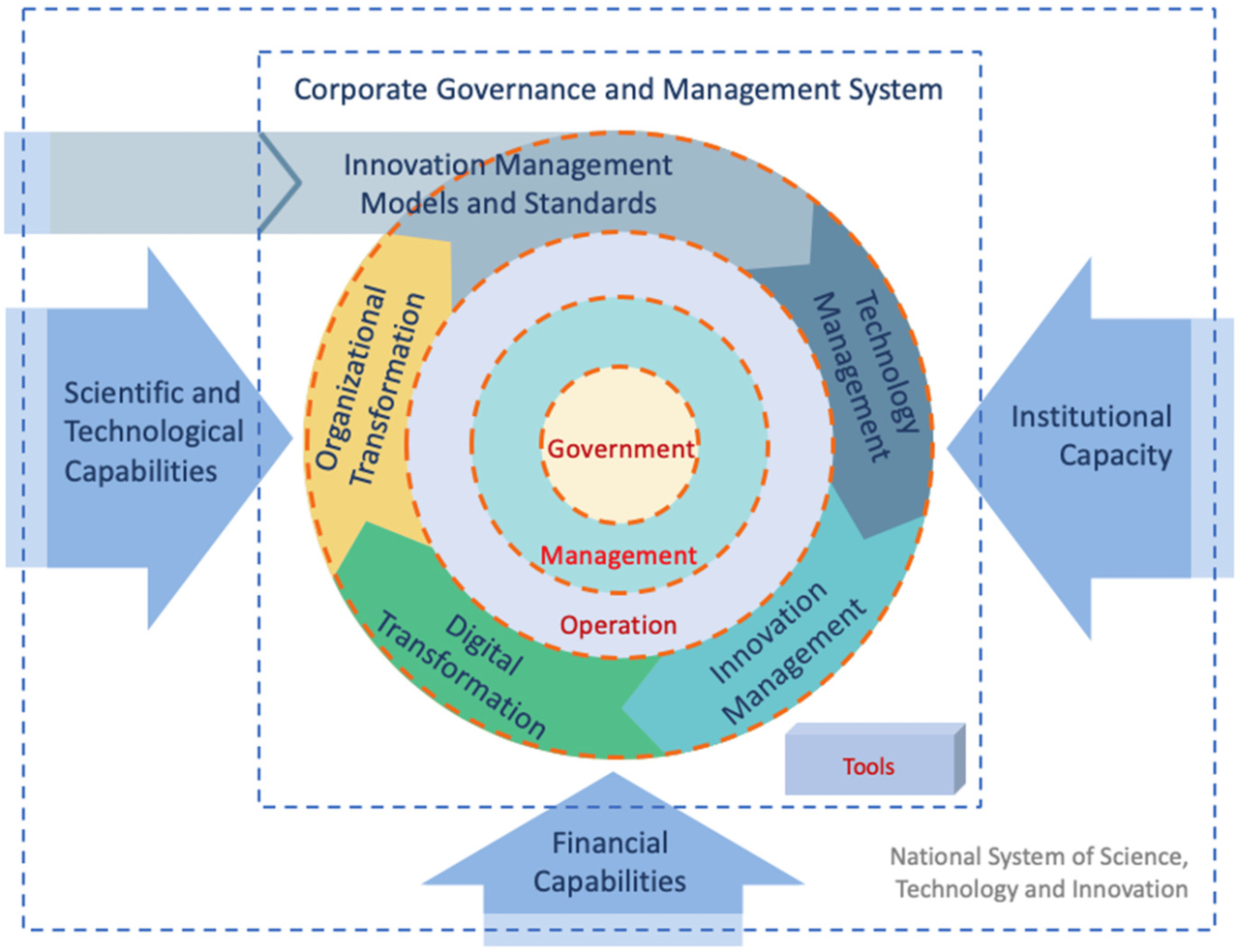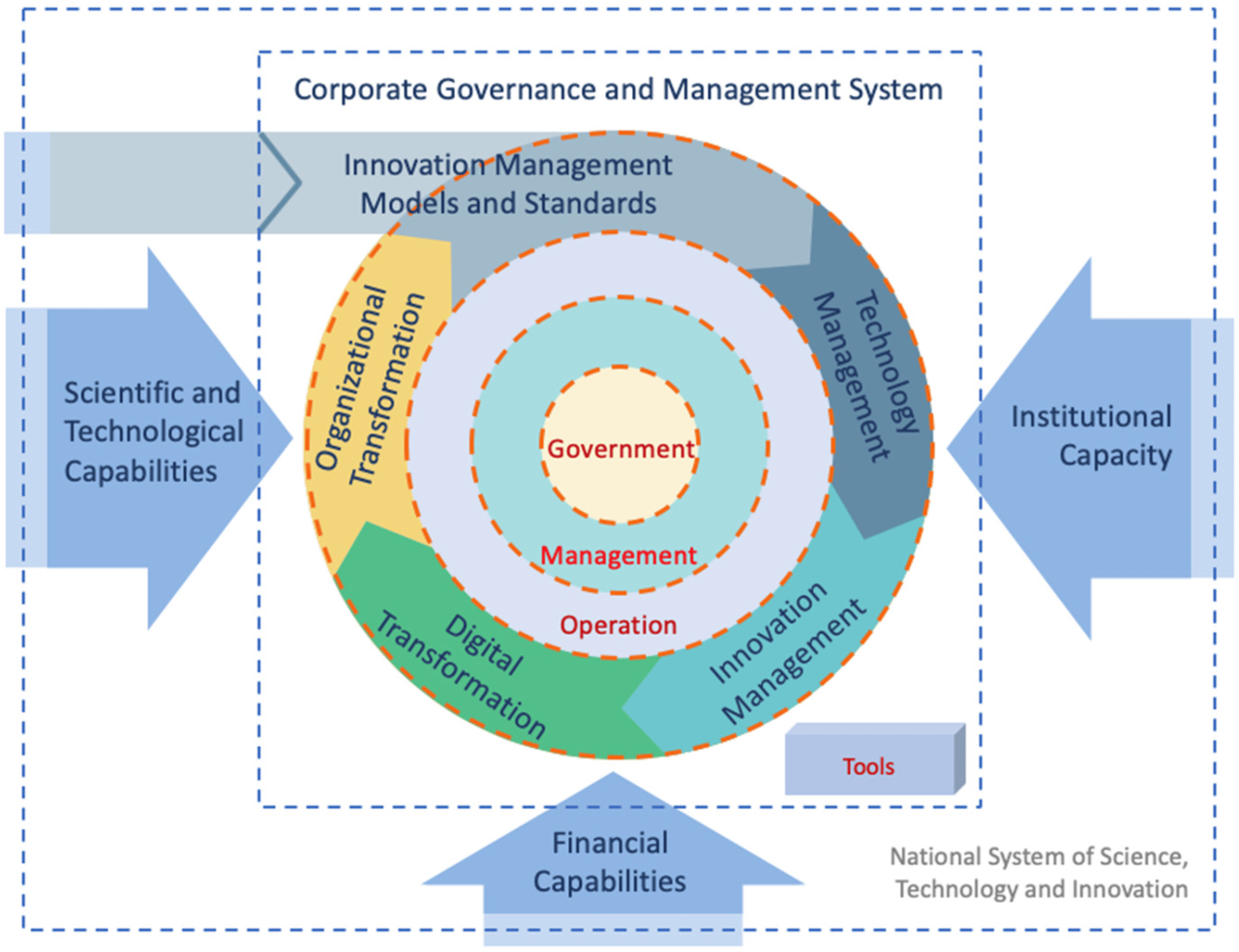Have you ever wondered what makes a company tick? Or how the bigwigs at the top keep everything running smoothly? “What is This Management? Essays on Corporate Governance and Management Education” is your backstage pass to the world of corporate governance and management, revealing the secrets behind those powerful boardrooms and the strategies that keep the wheels of industry turning.
It’s a journey through the intricate web of rules, regulations, and leadership that define the modern business landscape.
This book explores the evolution of corporate governance, from its humble beginnings to the complex, globally-connected system it is today. You’ll learn how management education has adapted to these changes, incorporating ethical principles and social responsibility into its curriculum.
Get ready to dive into the key concepts of management, from leadership styles to organizational structures, and see how these factors shape the very foundation of corporate governance.
Understanding Corporate Governance and Management Education

Corporate governance and management education are intertwined concepts that play a crucial role in shaping responsible and ethical business practices. This section delves into the core principles of corporate governance, its evolution, and how management education incorporates these principles.
The Core Principles of Corporate Governance
Corporate governance encompasses the structures, processes, and principles that guide a company’s operations. It ensures accountability, transparency, and fairness in decision-making. The core principles of corporate governance include:
- Accountability:This principle ensures that company leaders are answerable for their actions and decisions. It involves clear lines of authority and responsibility, with mechanisms in place to hold individuals accountable for their performance and ethical conduct.
- Transparency:Transparency in corporate governance means that all relevant information about the company’s operations, financial performance, and governance practices is readily available to stakeholders, including investors, employees, and the public. This principle promotes trust and reduces the risk of conflicts of interest.
- Fairness:Fairness in corporate governance involves treating all stakeholders equitably and ensuring that decisions are made in a way that is just and impartial. This principle emphasizes the importance of equal opportunities and access to information for all stakeholders.
- Independence:Independent boards of directors, free from undue influence by management, are essential for effective corporate governance. These boards provide oversight and guidance to management, ensuring that decisions are made in the best interests of the company and its stakeholders.
The Evolution of Corporate Governance Practices
Corporate governance practices have evolved significantly over time, driven by factors such as scandals, regulatory changes, and investor demands for greater accountability.
- The Rise of Shareholder Activism:In the 1980s and 1990s, shareholder activism gained momentum, with investors demanding greater transparency and accountability from corporations. This led to increased focus on corporate governance practices and the adoption of stricter regulations.
- The Impact of Global Regulations:Global regulatory bodies, such as the Organization for Economic Cooperation and Development (OECD) and the International Organization of Securities Commissions (IOSCO), have established guidelines for corporate governance, promoting best practices and harmonizing regulations across different jurisdictions.
- The Role of Corporate Social Responsibility (CSR):The increasing importance of CSR has influenced corporate governance practices. Companies are now expected to consider the social and environmental impacts of their operations, integrating sustainability principles into their decision-making processes.
Management Education and Corporate Governance
Management education plays a critical role in preparing future business leaders to understand and implement sound corporate governance principles. Business schools have integrated corporate governance principles into their curricula, focusing on:
- Ethics and Social Responsibility:Management education programs emphasize the importance of ethical decision-making and the role of social responsibility in business. Students learn about ethical frameworks, corporate social responsibility initiatives, and the impact of business decisions on stakeholders.
- Board Governance and Corporate Law:Courses on board governance and corporate law provide students with a deep understanding of the legal and regulatory frameworks that govern corporate behavior. They learn about the responsibilities of directors, the role of the board in oversight, and the legal implications of corporate decisions.
- Financial Reporting and Risk Management:Management education programs equip students with the skills necessary to understand financial reporting, analyze financial statements, and manage risks effectively. This knowledge is crucial for ensuring transparency and accountability in corporate governance.
Ethics and Social Responsibility in Corporate Governance
Ethics and social responsibility are fundamental to effective corporate governance. They ensure that companies operate in a way that is beneficial to all stakeholders and contributes to a sustainable future.
- Ethical Decision-Making:Ethical decision-making is essential for maintaining the trust and confidence of stakeholders. Companies should establish clear ethical guidelines, provide training on ethical conduct, and create a culture of ethical behavior.
- Social Impact:Companies have a responsibility to consider the social and environmental impact of their operations. This includes addressing issues such as labor rights, environmental protection, and community engagement. Companies that integrate social responsibility into their business models are often viewed more favorably by investors and consumers.
Key Concepts in Management

Management is a fundamental aspect of any organization, and its principles are directly relevant to corporate governance. Effective management practices are crucial for ensuring responsible decision-making, ethical behavior, and the long-term sustainability of a company.
The Role of Leadership in Shaping Corporate Governance Practices
Leadership plays a critical role in establishing and maintaining a strong corporate governance framework. Effective leaders are responsible for setting the tone at the top, creating a culture of ethical behavior, and ensuring that all stakeholders’ interests are considered.
So, you’re thinking about diving into the world of corporate governance and management education? “What is this Management?” is a pretty epic read, and if you’re ready to level up your knowledge, Download And Listen Here to get started. It’s like a cheat code for understanding the ins and outs of running a company, and trust me, you’ll be glad you took the plunge.
- Vision and Values:Leaders set the vision and values that guide the organization’s actions and decision-making. These values should align with ethical principles and promote transparency and accountability.
- Ethical Conduct:Leaders must demonstrate ethical behavior themselves and hold others accountable for adhering to the organization’s ethical standards. They should create a culture where ethical concerns are raised and addressed promptly.
- Stakeholder Engagement:Leaders are responsible for engaging with all stakeholders, including shareholders, employees, customers, and the community. This involves listening to their concerns, addressing their interests, and ensuring that they are treated fairly.
Impact of Organizational Structure and Culture on Corporate Governance
Organizational structure and culture significantly influence corporate governance practices. A well-defined structure with clear lines of authority and accountability is essential for effective decision-making and oversight. A strong culture that values ethical behavior, transparency, and accountability promotes responsible corporate governance.
- Structure:A clear organizational structure with defined roles and responsibilities helps to prevent conflicts of interest, promote transparency, and ensure that decision-making is aligned with the organization’s values.
- Culture:A strong culture that values integrity, compliance, and stakeholder engagement creates a positive environment for corporate governance. This culture should be fostered through training, communication, and rewards for ethical behavior.
- Communication:Open and transparent communication is essential for effective corporate governance. This includes clear communication of the organization’s values, policies, and performance to all stakeholders.
Management Techniques Contributing to Effective Corporate Governance
Management techniques can be applied to enhance corporate governance practices. These techniques aim to improve decision-making, risk management, and performance monitoring.
- Risk Management:Organizations should have a comprehensive risk management framework that identifies, assesses, and mitigates potential risks. This includes financial, operational, legal, and reputational risks.
- Performance Monitoring:Regular performance monitoring and evaluation help to ensure that the organization is meeting its objectives and complying with relevant regulations. This includes financial performance, compliance with laws and regulations, and adherence to ethical standards.
- Internal Controls:Strong internal controls are essential for preventing fraud and ensuring the accuracy of financial reporting. These controls should be regularly reviewed and updated to address changing risks and regulations.
Book Review
This book review delves into the intricacies of corporate governance and management education, exploring the key arguments and insights presented in a renowned publication. It analyzes the book’s strengths and weaknesses, examines its practical implications for businesses and organizations, and compares its perspective with other prominent theories and practices in the field.
The review concludes by summarizing the book’s main arguments in a structured table, highlighting key concepts, examples, and recommendations.
Key Arguments and Insights
The book argues that traditional approaches to corporate governance and management education are no longer sufficient in today’s dynamic and complex business environment. It emphasizes the need for a more holistic and integrated approach that considers the interconnectedness of various stakeholders, including shareholders, employees, customers, and the broader community.
The book highlights the importance of ethical leadership, social responsibility, and sustainability in shaping corporate governance and management practices.
Strengths and Weaknesses of the Book’s Approach
The book’s strengths lie in its comprehensive and insightful analysis of the evolving landscape of corporate governance and management education. It provides a compelling argument for the need to adapt traditional models to address contemporary challenges, such as globalization, technological advancements, and increasing stakeholder expectations.
So, you’re digging into “What is this Management?” and trying to wrap your head around corporate governance and all that jazz? Well, let’s talk about real-world impact. Check out this article, Trailblazer Lighting the Path for Transgender Equality in Corporate America , and see how corporate leadership is making a difference in creating a more inclusive workplace.
It’s a reminder that management isn’t just about spreadsheets and profit margins – it’s about building a better future for everyone. And that’s a lesson that can help us all understand what “What is this Management?” is truly about.
The book’s emphasis on ethical leadership and social responsibility is particularly timely and relevant.However, the book’s approach also has some limitations. It may be overly idealistic in its vision for a more ethical and sustainable business world. While the book’s recommendations are valuable, they may be challenging to implement in practice, especially for businesses operating in highly competitive and complex markets.
So, you’re digging into the nitty-gritty of corporate governance and management education, huh? That’s some serious stuff! Maybe you need a break from the boardroom and some wild, gritty stories, like the one in Granite City The Life of a Bandit.
It’s about a real-life bandit who lived life on the edge. But hey, once you’re done with that, you can get back to the complexities of “What is this Management?” and those corporate spreadsheets.
Additionally, the book’s focus on stakeholder engagement may not adequately address the challenges of balancing competing interests and ensuring that all stakeholders have a fair and equitable voice.
Practical Implications of the Book’s Recommendations
The book’s recommendations have significant practical implications for businesses and organizations. It encourages businesses to adopt a more holistic and integrated approach to corporate governance, taking into account the interests of all stakeholders. It also emphasizes the importance of developing ethical leadership skills, promoting social responsibility, and embracing sustainability practices.
These recommendations can help businesses build trust, enhance their reputation, and achieve long-term success.
So, you’re trying to wrap your head around the whole corporate governance and management education thing, huh? It’s like trying to figure out the plot of a reality show – you think you’ve got it figured out, but then BAM! There’s a twist you didn’t see coming.
But, check out this book called I Said What I Said An Anthology of Black Women in NonprofitThe Black Women in Nonprofit Leadership Cohort , it’s like a masterclass on leadership from the real-deal. It might just give you a whole new perspective on that management textbook.
Comparison with Other Prominent Theories and Practices
The book’s perspective aligns with several prominent theories and practices in the field of corporate governance and management education. For instance, it echoes the principles of stakeholder theory, which emphasizes the importance of considering the interests of all stakeholders, not just shareholders.
The book also aligns with the growing movement towards sustainable business practices, which recognizes the interconnectedness of economic, social, and environmental performance.
Main Arguments in a Table
| Key Concepts | Examples | Recommendations |
|---|---|---|
| Stakeholder Engagement | Companies engaging with employees, customers, and communities to understand their concerns and aspirations. | Establish mechanisms for regular and meaningful stakeholder dialogue. |
| Ethical Leadership | Leaders who prioritize ethical behavior, transparency, and accountability. | Develop leadership programs that emphasize ethical decision-making and responsible leadership. |
| Social Responsibility | Businesses actively contributing to the well-being of society and the environment. | Integrate social responsibility into business strategies and operations. |
| Sustainability | Companies operating in a way that minimizes their environmental impact and promotes long-term sustainability. | Adopt sustainable practices throughout the value chain, from sourcing to production to distribution. |
Wrap-Up
By the end of this book, you’ll have a deeper understanding of the power dynamics at play in the business world. You’ll be equipped to navigate the complexities of corporate governance, whether you’re an aspiring leader, a seasoned professional, or simply a curious observer.
“What is This Management?” isn’t just a book about corporate governance; it’s a guide to the very soul of modern business, revealing the forces that shape our economy and the decisions that impact our lives.
General Inquiries
What are some real-world examples of how corporate governance principles are applied?
Think about companies like Tesla or Apple. Their boards of directors have implemented strong corporate governance practices to ensure transparency, accountability, and ethical decision-making. This includes things like independent audits, shareholder rights, and clear conflict of interest policies.
How does management education prepare students for a career in corporate governance?
Management education programs are increasingly incorporating courses on corporate governance, ethics, and social responsibility. These programs equip students with the knowledge and skills needed to understand and navigate the complex world of business and corporate governance.
Is there a specific book that is often cited as a key resource for understanding corporate governance?
While there are many valuable books on the subject, “Corporate Governance: Principles and Practices” by David H. Strickland III and Richard M. Hodgetts is a widely recognized and respected resource. It provides a comprehensive overview of the field and is often used in university courses.

